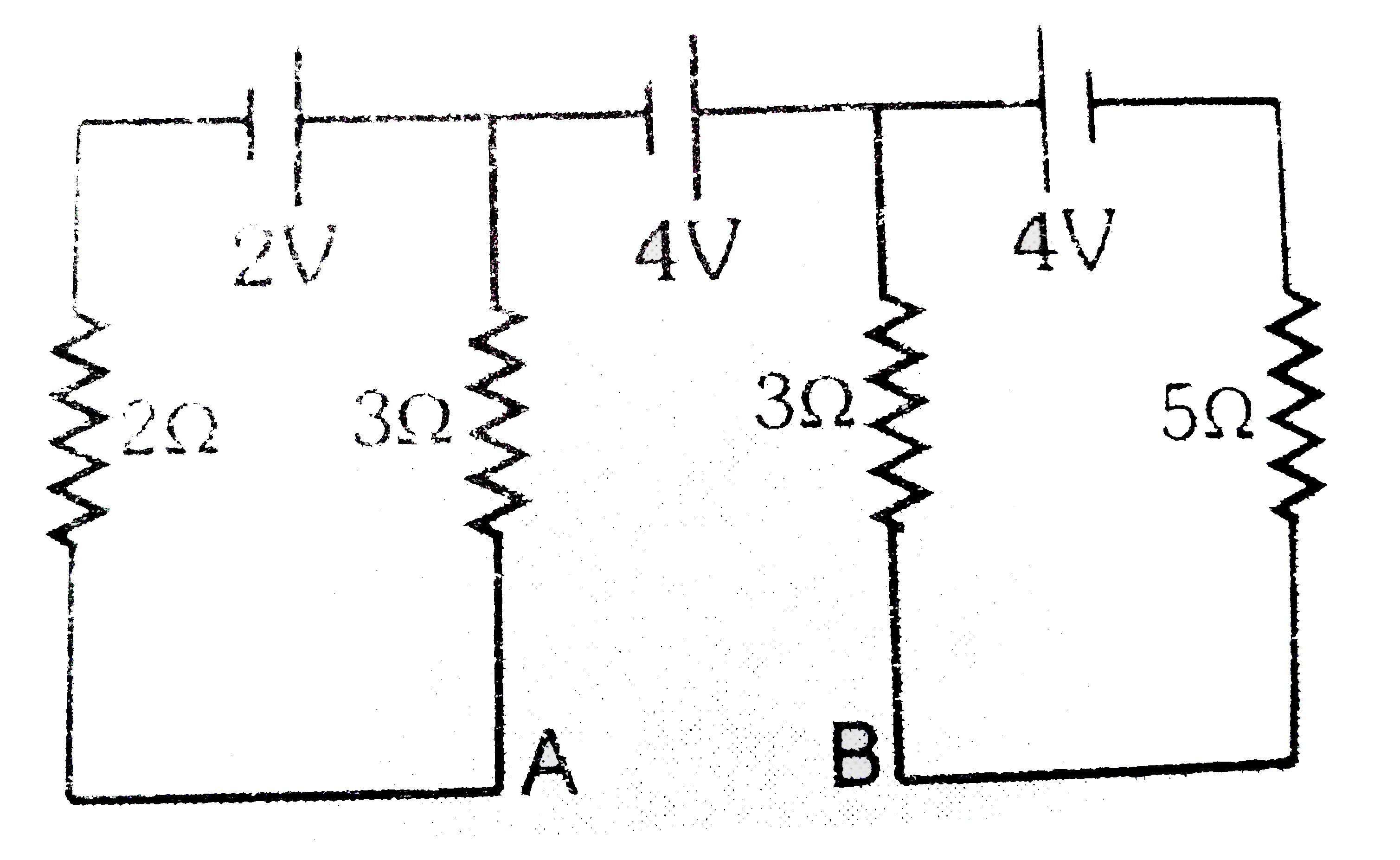(a) Find the potential difference between A and B
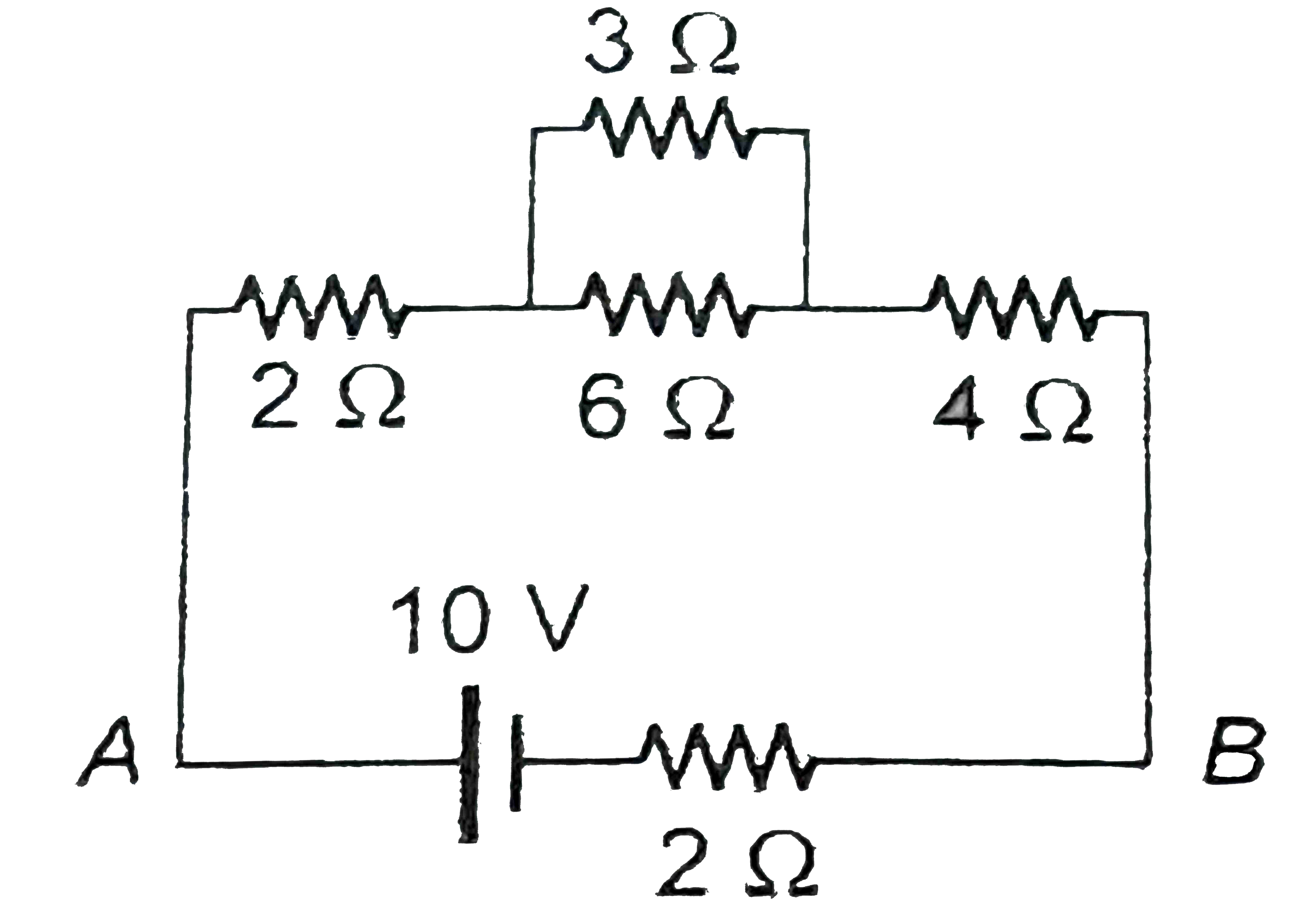
(b) Calculate the current flowing in the circuit and the potential difference across terminals of each cell.
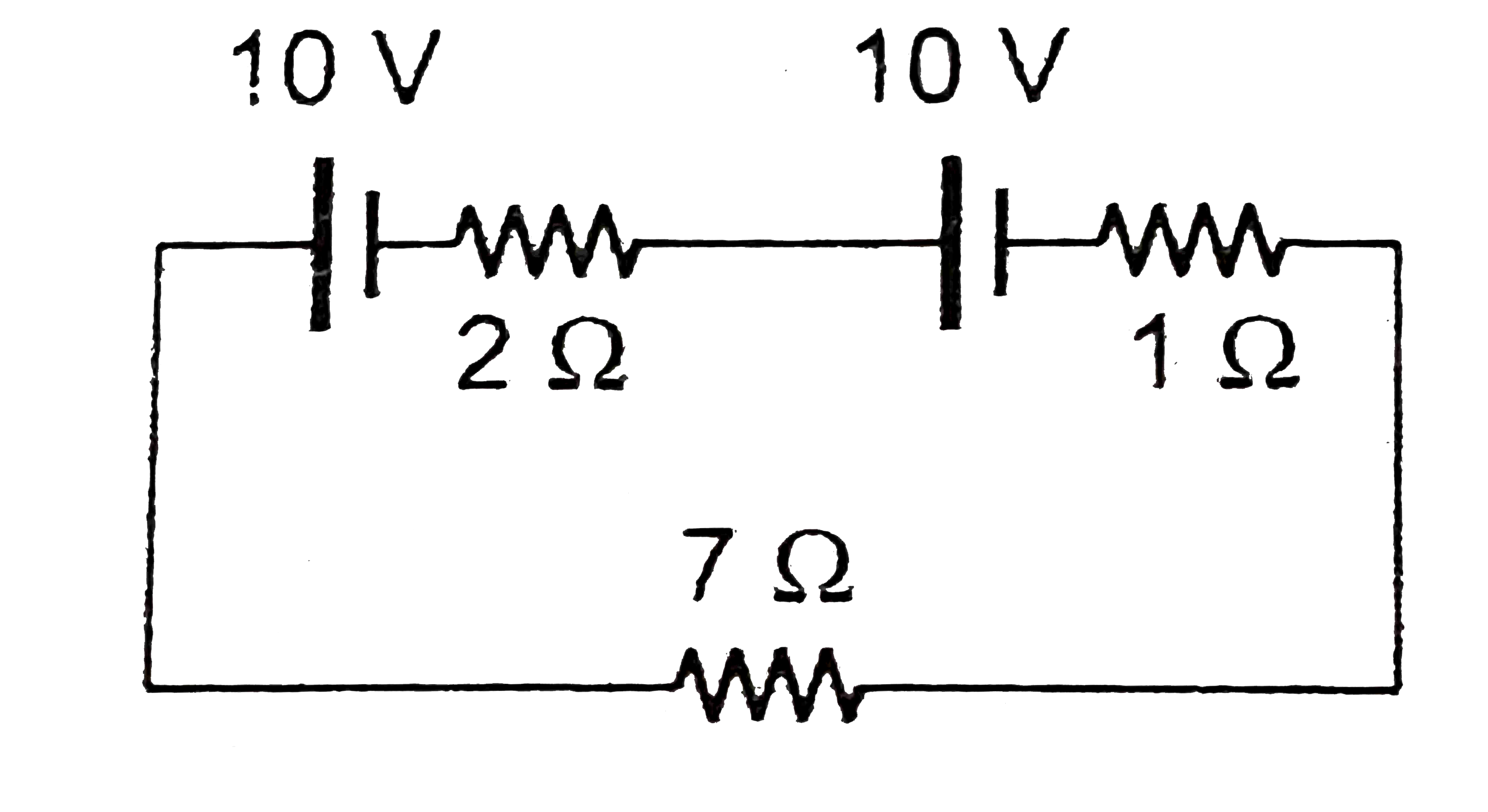
( c) Calculate the potential difference across terminals of each cell.
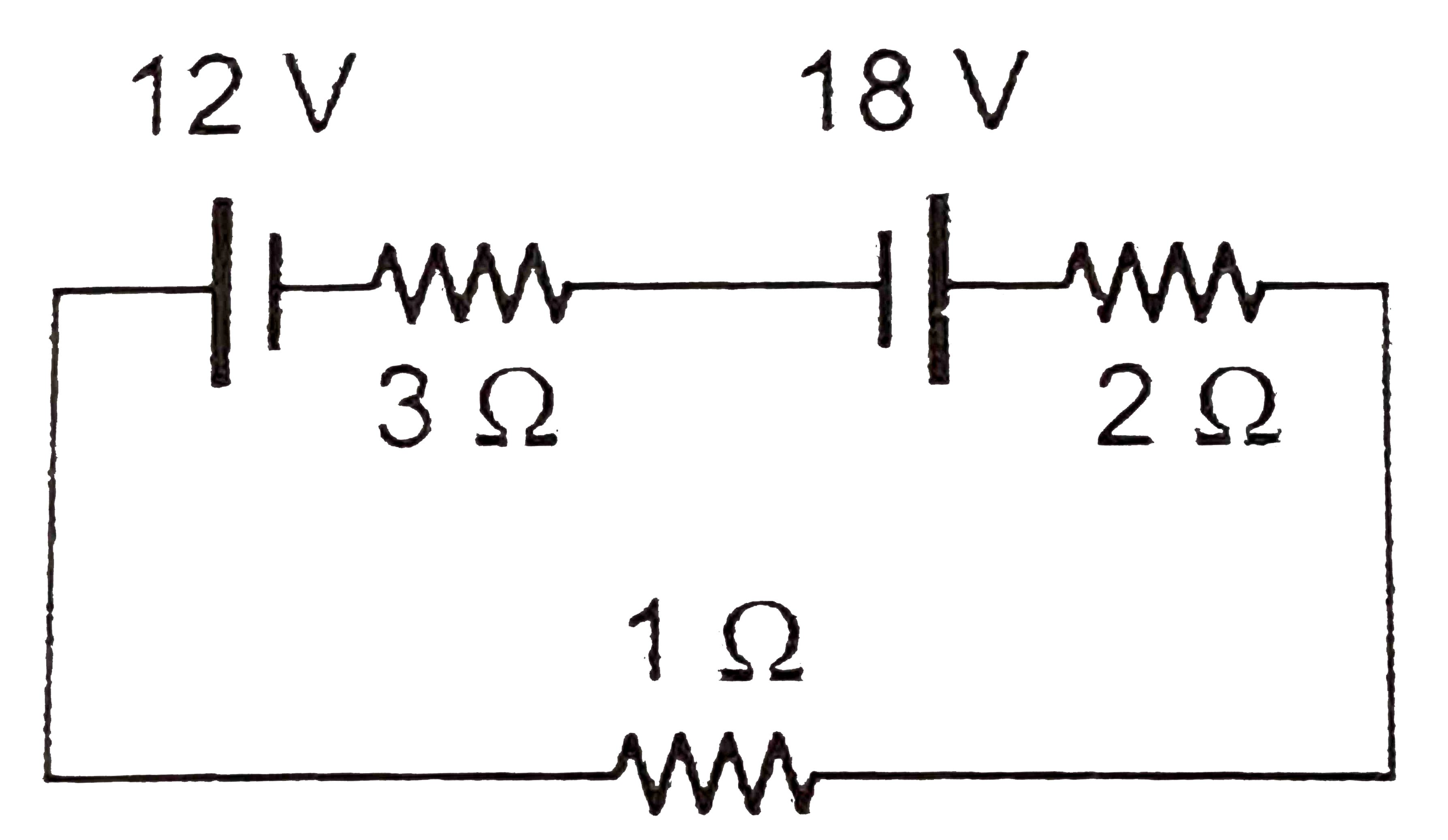
(d) Calculate the potential difference between A and B
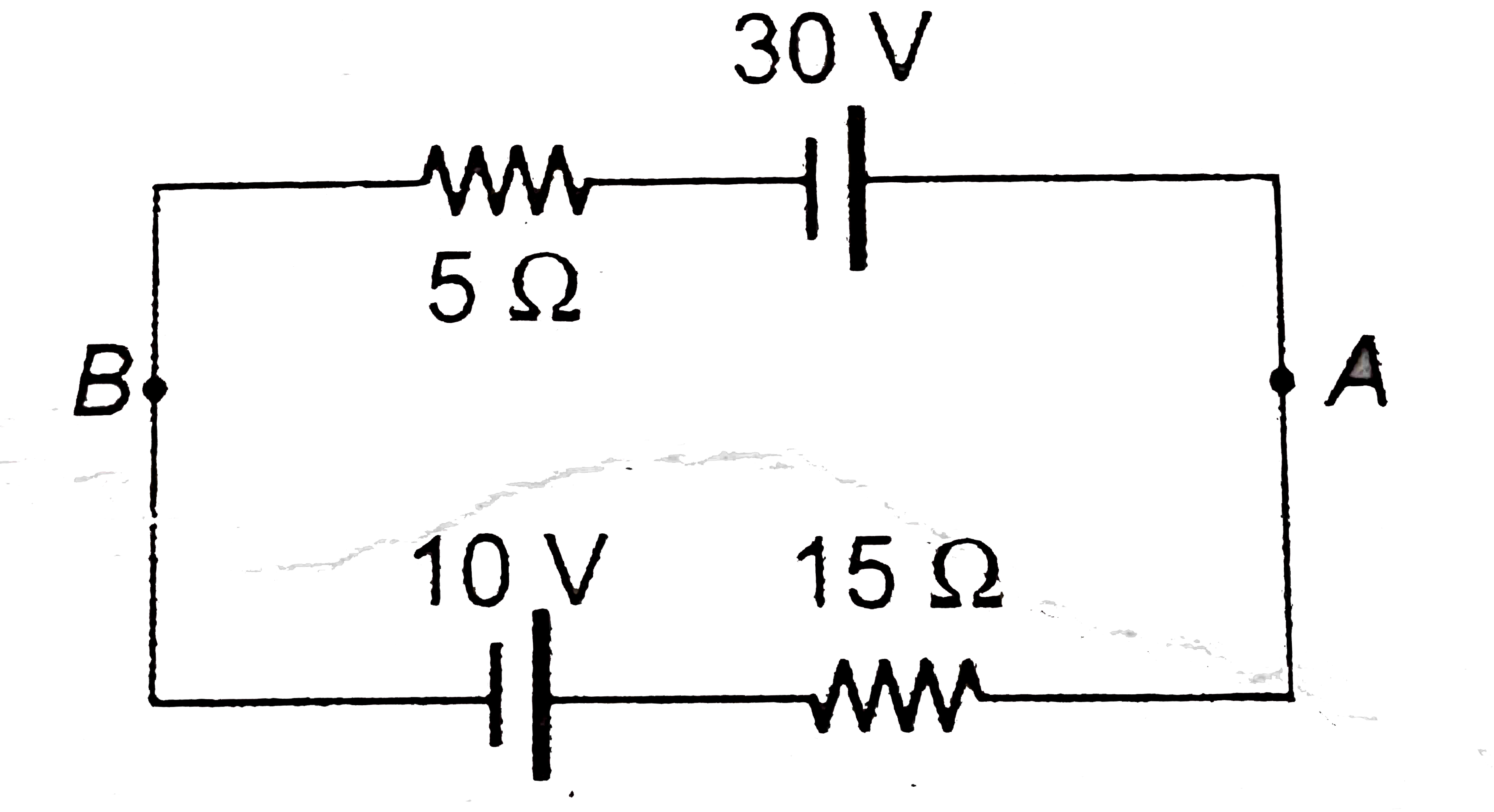
( e) Calculate the current in each resistor and terminal potential difference across each cell.

(f) Calculate potential difference across each cell.
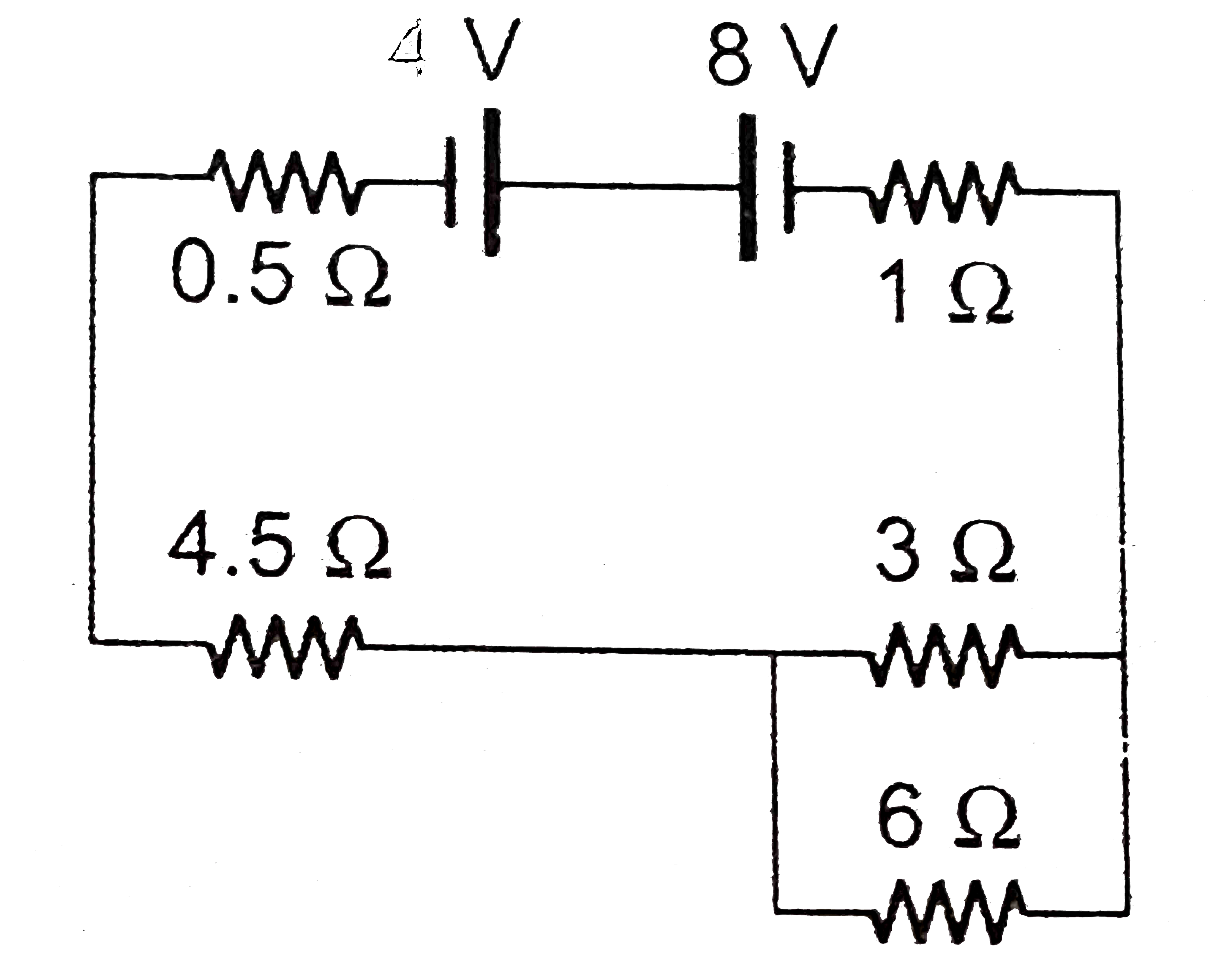
(g) A battery of 6 cells each of emf 2V and internal resistance 0.5Ω is being changed by DC mains of emf 220V by using an external resistance of 10Ω. Calculate.
(i) the charging current
(ii) the potential difference across the battery.
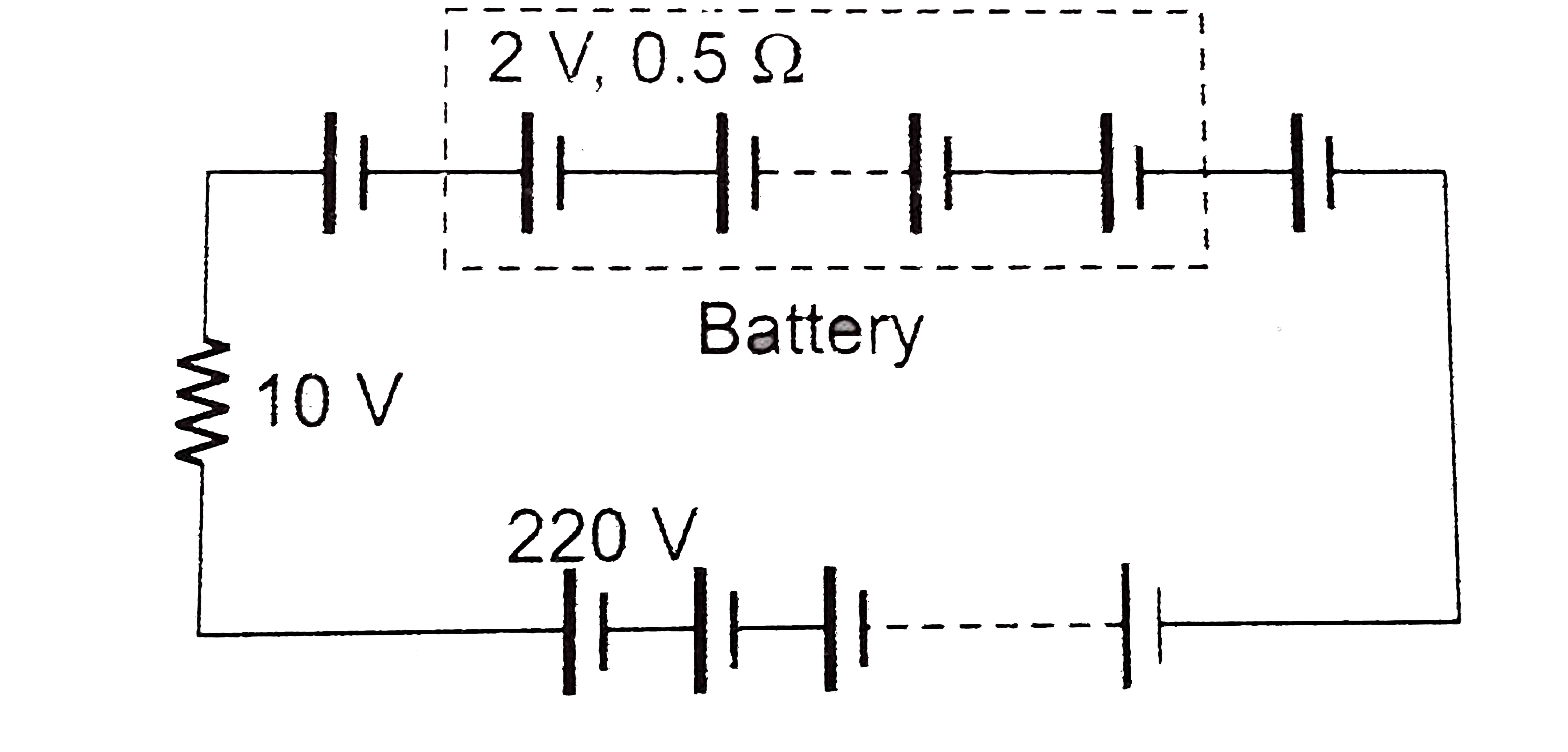 .
.
Text Solution
(a) i=102+8=1A
VA−VB=i×8=1×8=8V
OR
VA−VB=E−ir
=10−1×2=8V
(Cell is supplying current)
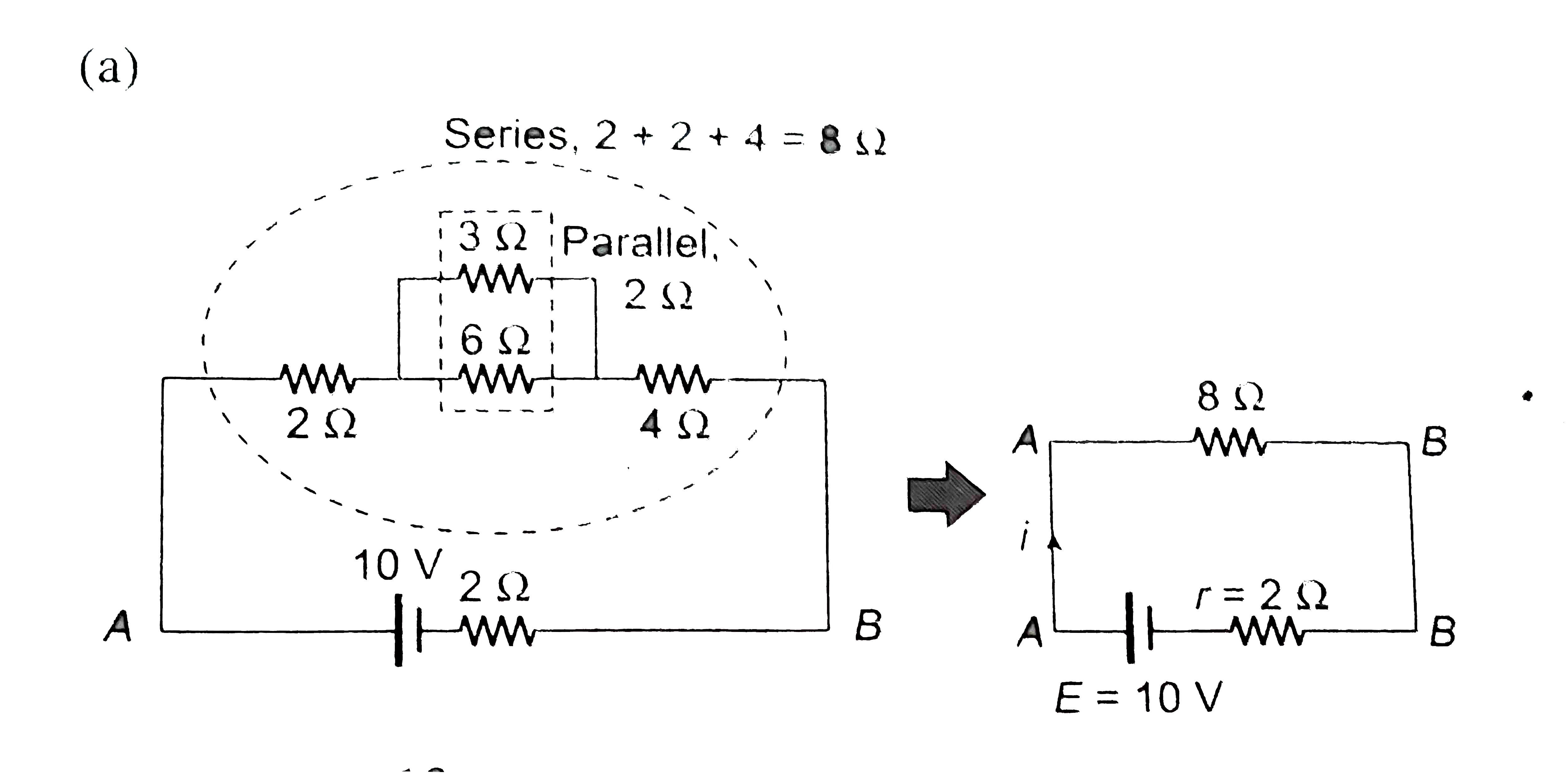 .
.
(b) i=10+102+1+7=2A
Cell X : VA−VB=10−2×2=6V
Cell Y : VB−VC=10−2×1=8V
(Cell are supplying current)
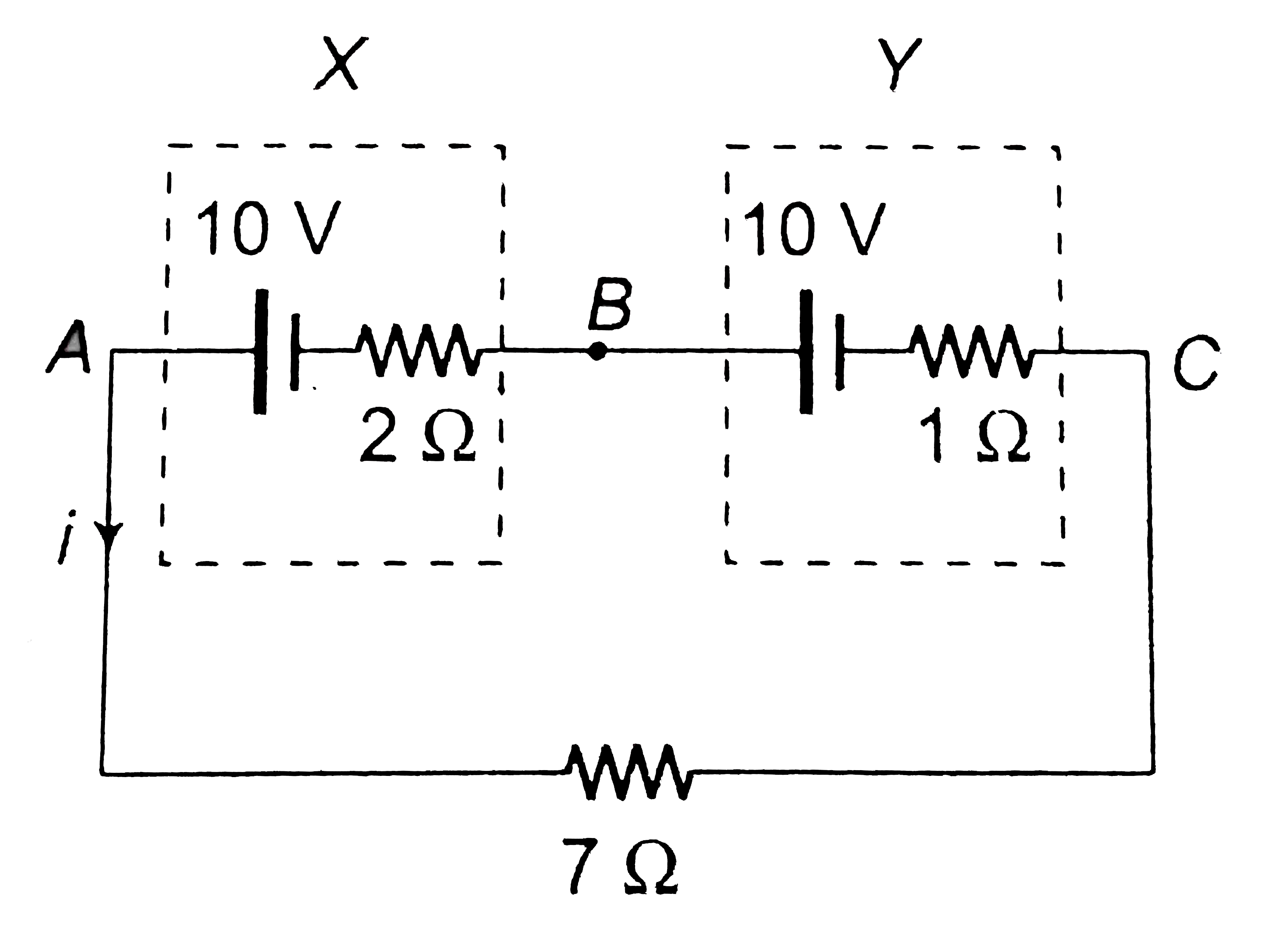 .
.
( c) Net emf =18−12=6V
Net resistance =3+2+1=6Ω
i=66=1A
Cell X : It is taking current
VA−VB=12+1×3=15V
Cell Y : It is supplying current
VC−VB=18−1×2=16V.
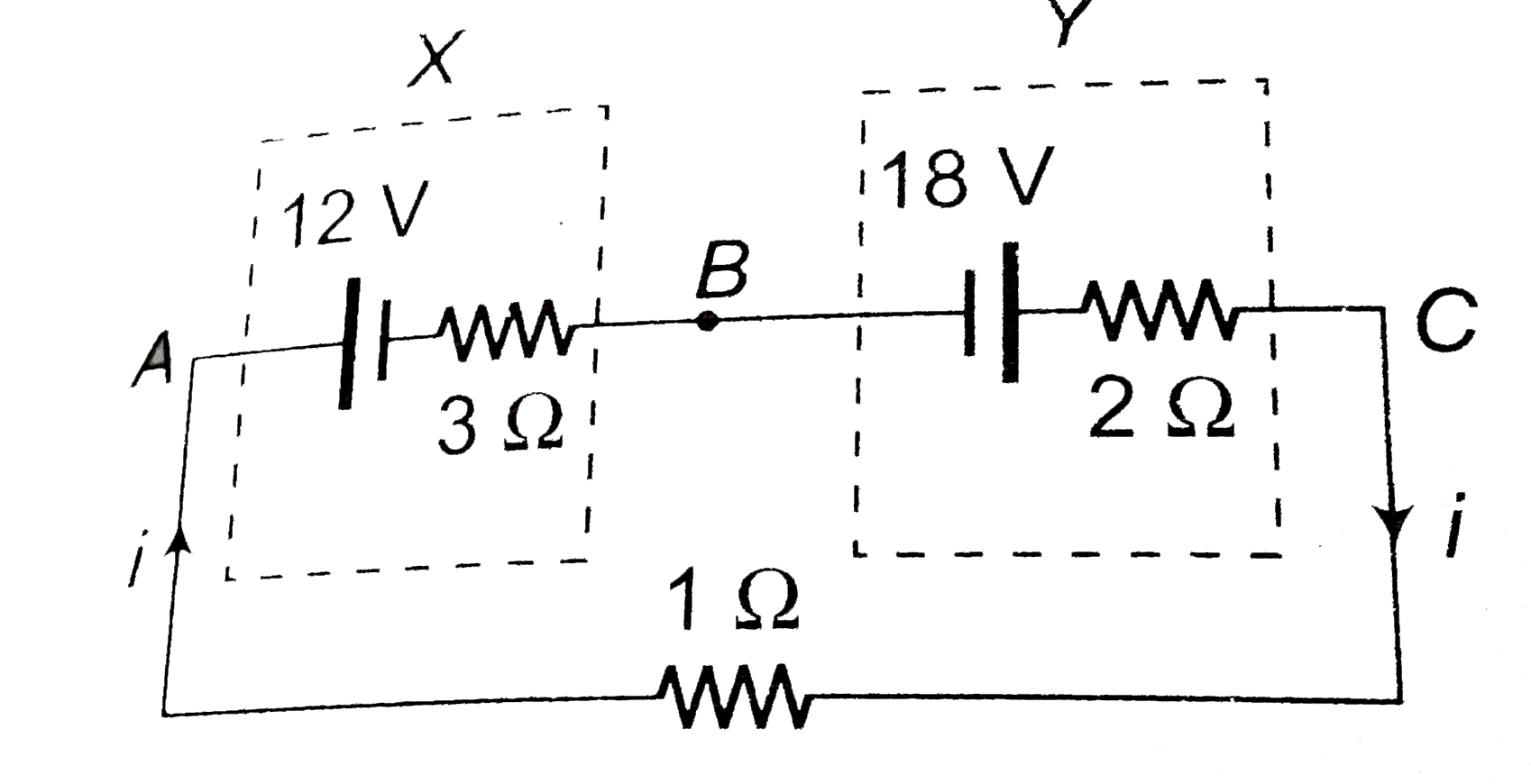 .
.
(d) These cells are in series because same current flows in them, cells are opposing.
i=30−105+15=1A
Cell X : (supplying current), VA−VB=30−1×5=25V
OR
Cell Y : (taking current), VA−VB=10+1×15=25V.
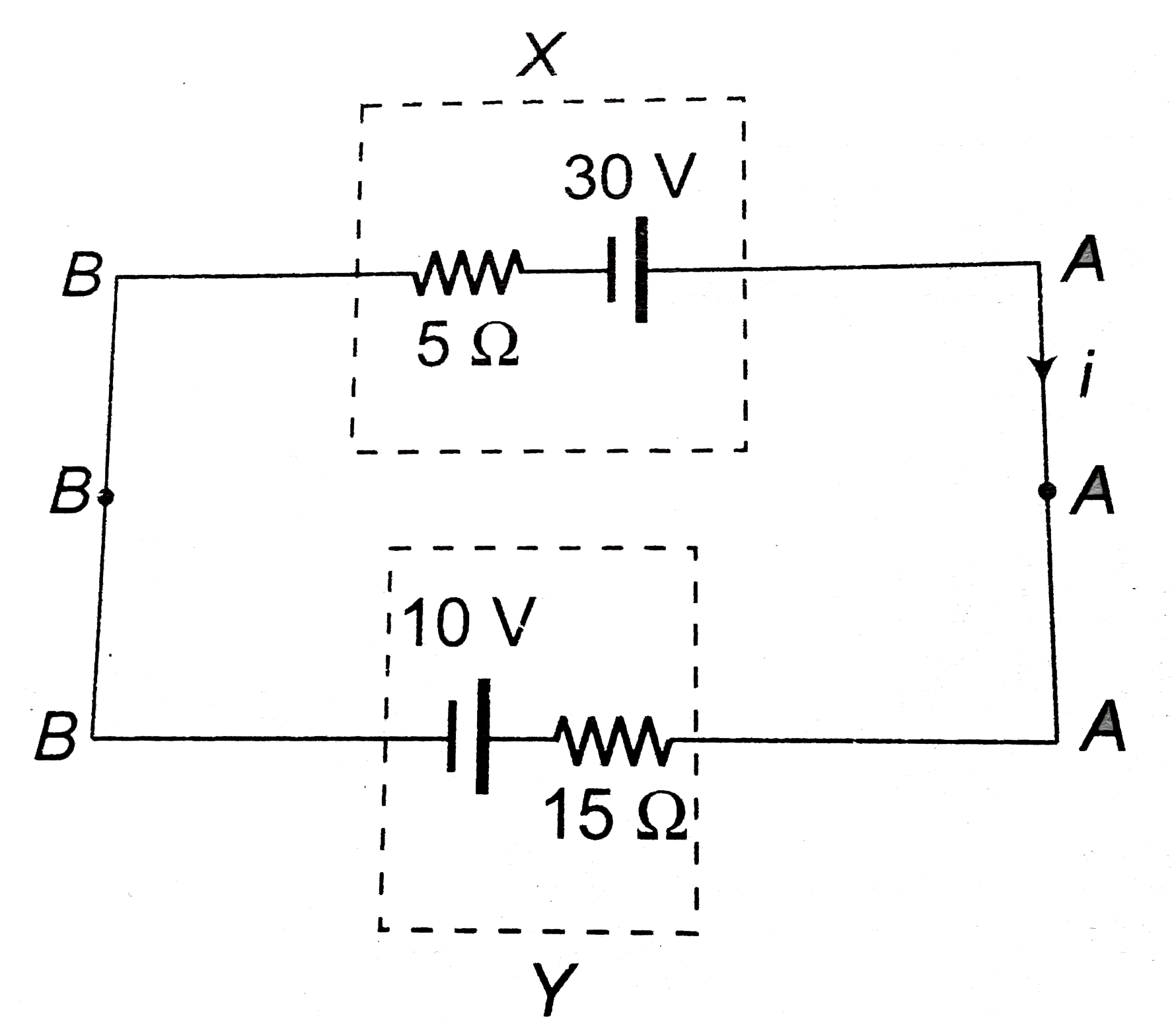 .
.
( e) Net emf =20−10=10V
Net resistance =2+2+1+5=10Ω
i=1010=1A
p.d. across AB=1×2=2V
Cell X : (supplying current), VA−VD=20−1×2=18V
Cell Y : (taking current), VB−VC=10+1×1=11V
i1=24=12A
i2=26=13A
i3=212=16A
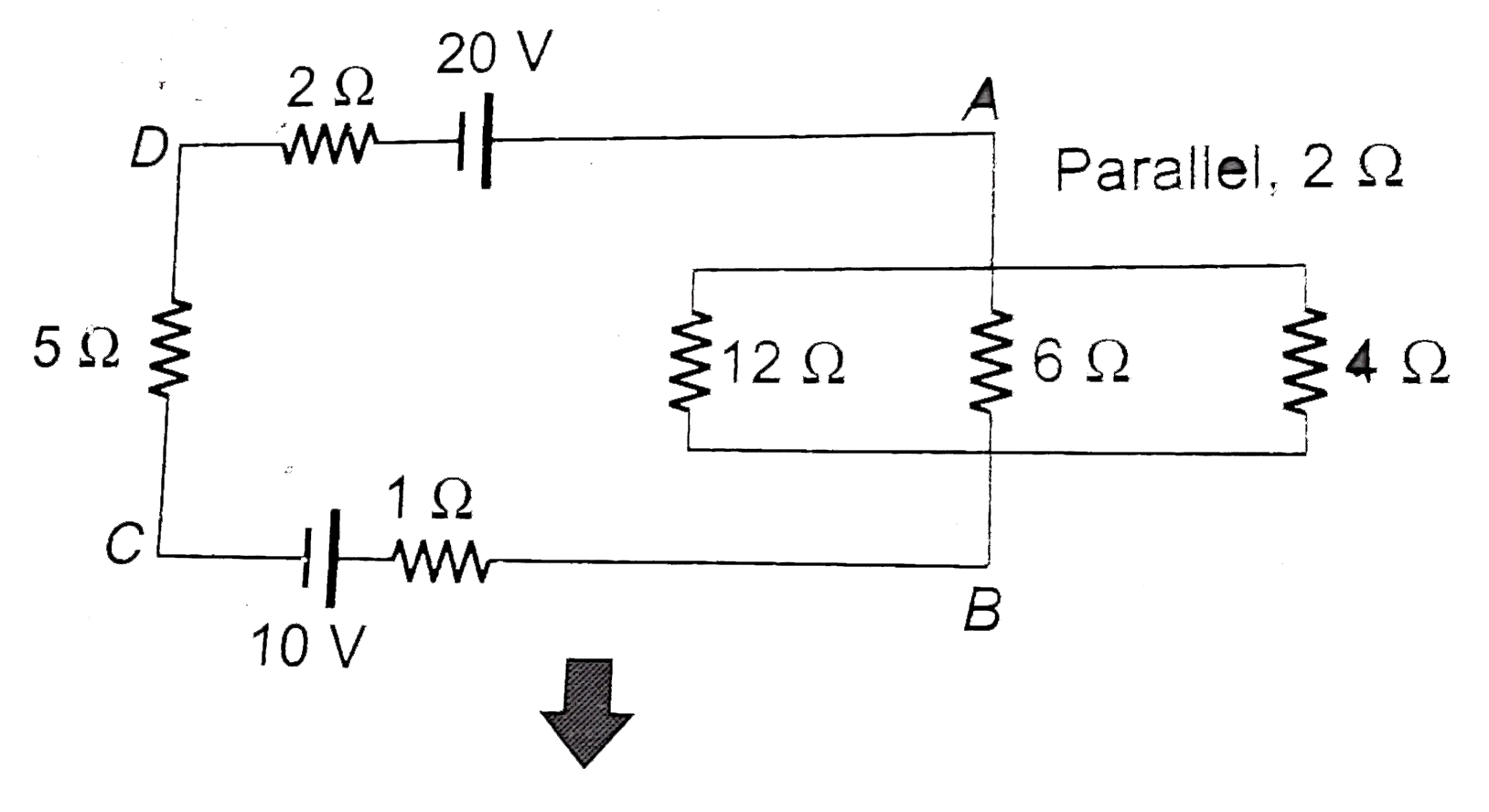
(f) Net emf =8−4=4V
Net resistance =0.5+1+2+4.5=8Ω
i=48=12A
Cell X : (supplying current), VB−VA=8−12×1=7.5V
Cell Y : (taking current), VB−VC=4+12×0.5=4.25V
 .
.
(g) Net emf of battery =6×2=12V
Net resistance of battery =6×0.5=3Ω
(i) i=220−123+10=20813=16A
(ii) Battery : (taking current)
VA−VB=12+16×3=60V.
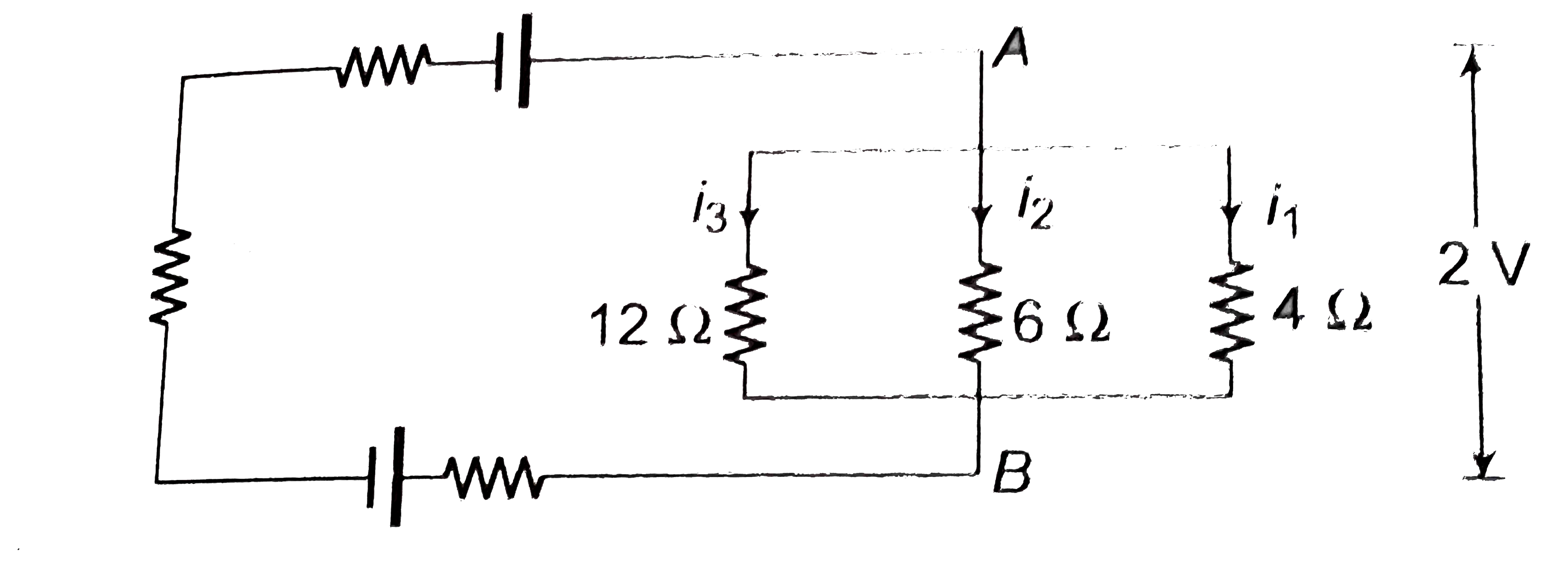 .
.
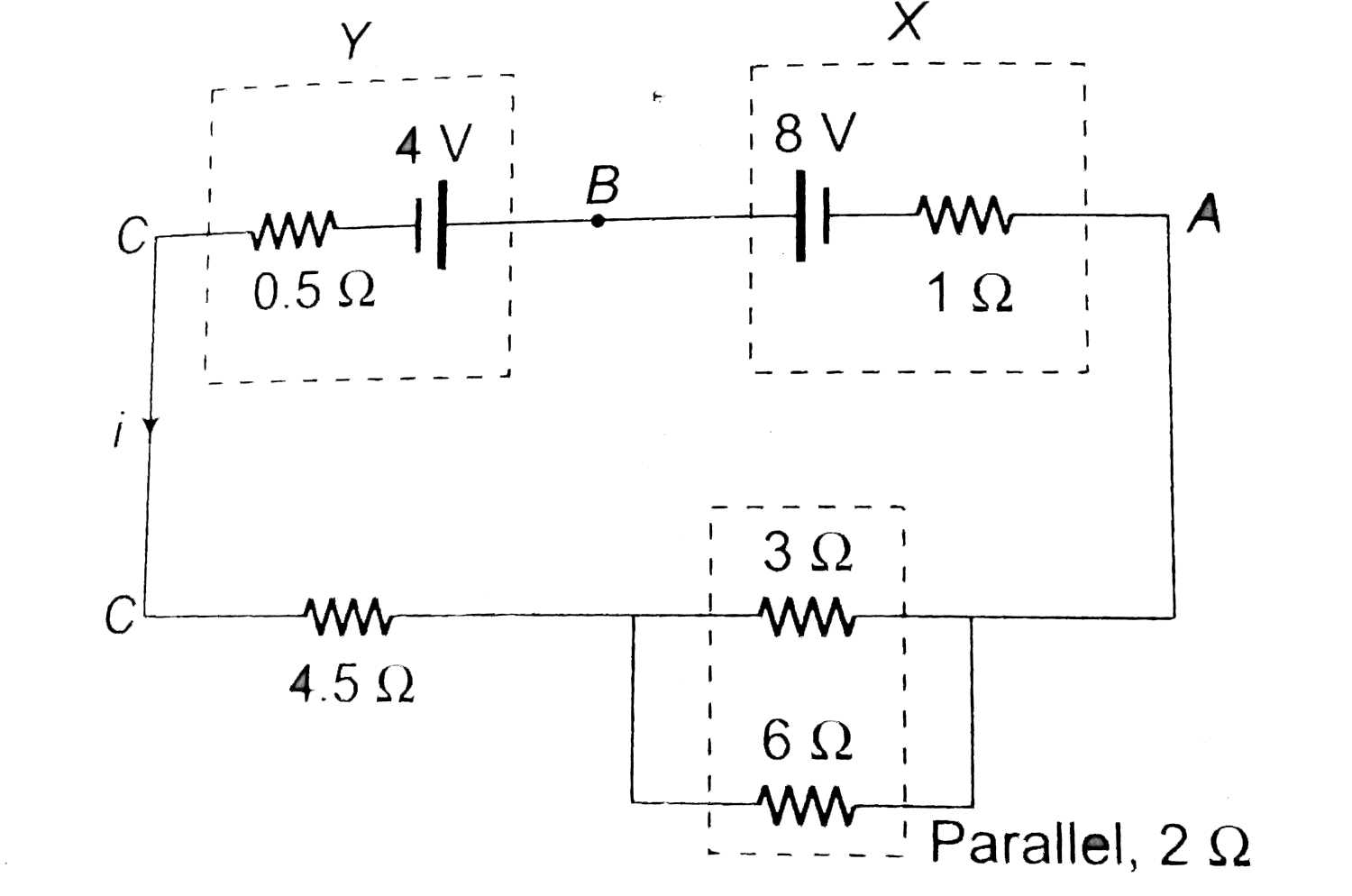
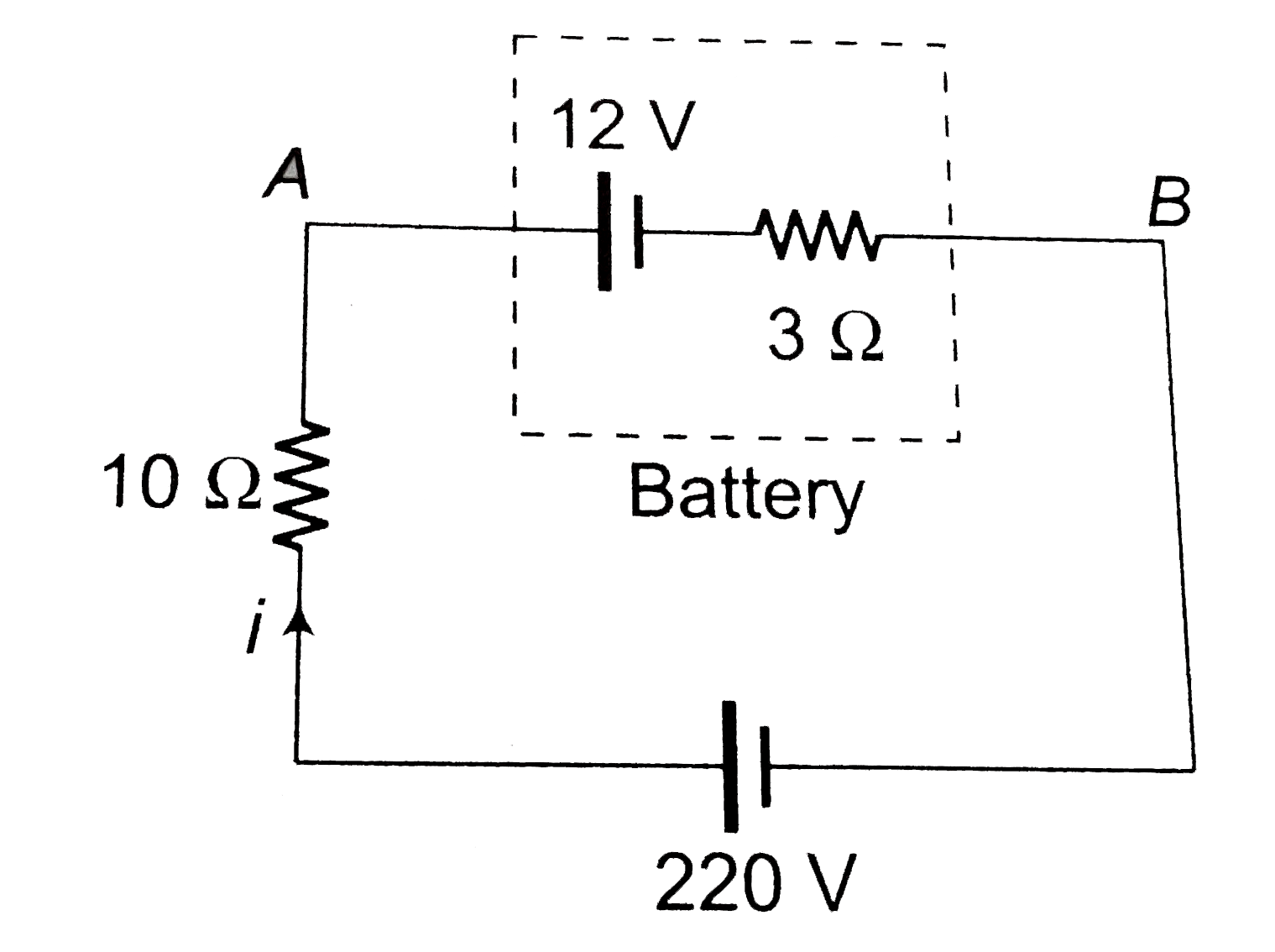
|
Topper's Solved these Questions
Similar Questions
Knowledge Check
The potential difference across the terminals of the cell in open circuit is called as
AcurrentBpot. diff. of cellCe.m.f. of cellDresistanceIn the figure the potential difference across 6 ohm resistor is 48 V. Then the potential difference between A and B is
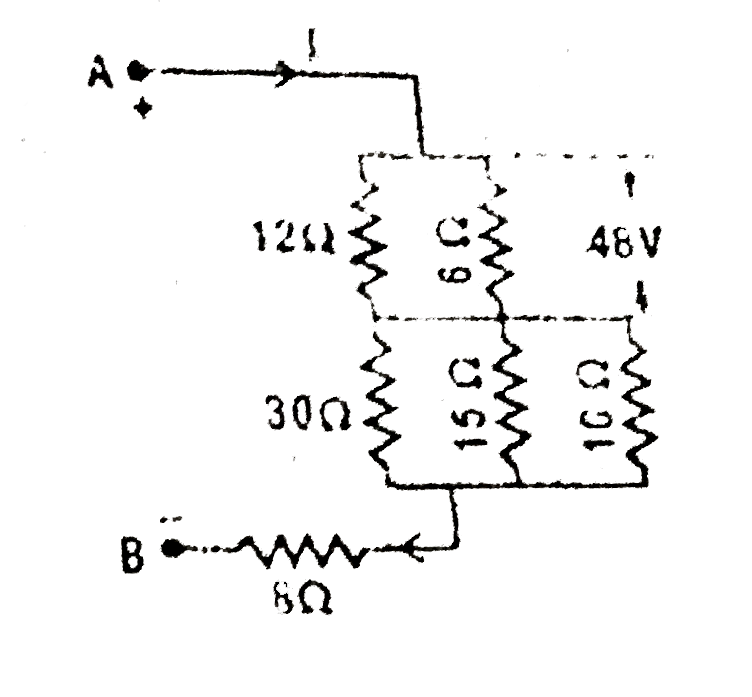 A48 VB102 VC204VDcan't be determined
A48 VB102 VC204VDcan't be determinedPotential difference across the terminal of a non ideal battery is
Azero when it is short circuitedBless than its emf when current flows from negative terminal to positive terinal inside the batteryCzero when no current is drawn from the batteryDgreater than its emf when current flows from positive terminal to negative terminal inside the battery
In the circuit shown in Fig. 4.41, calculate the current in each resistor and potential difference across each resistor.
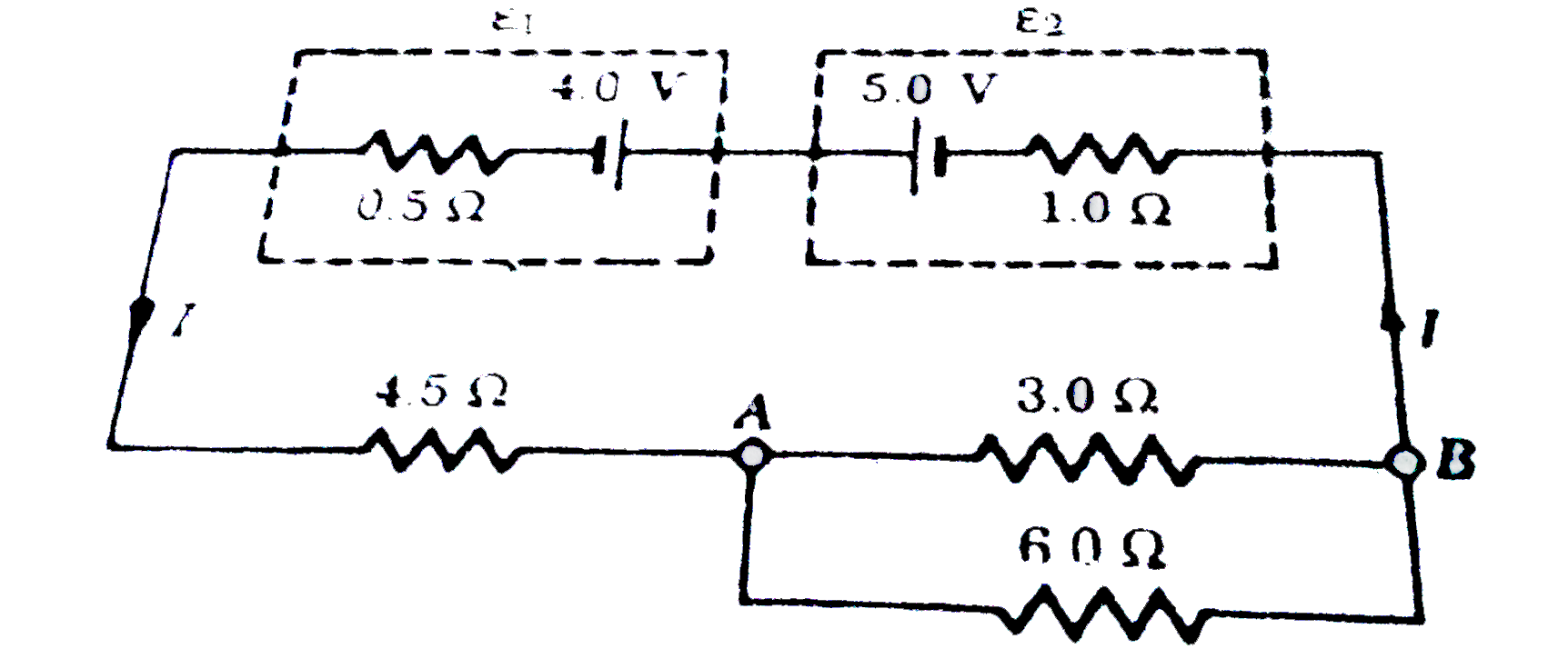
View SolutionIn the circuit shown in Fig. 4.41, calculate the current in each resistor and potential difference across each resistor.

View SolutionPotential difference across the terminals of a cell is always less than its emf.
View SolutionIn the figure the potential difference across 6 ohm resistor is 48 V. Then the potential difference between A and B is

View SolutionPotential difference across the terminal of a non ideal battery is
View Solution

